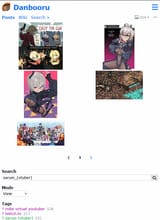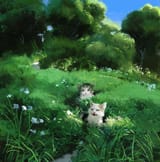>>103190445
1. Those sites have no requirement to tag uploads, and even if they have tags, artists are pretty bad about tagging their stuff. The tagging on the boorus makes it super easy to find something you're interested in, and filter stuff you don't want to see.
2. Artists often don't save their own work. I guess they see it the same way I see my loose leaf notes: just extra clutter to br tossed or something. Sometimes they get self-conscious of old stuff they did when they were amateurs and delete it. Sometimes they read a political headline and nuke eveything to move to a different platform (twitter and bluesky for example) without taking all the art they made with them.
3. Sites like twitter are focused on being a social engineering platform rather than an image platform. They mix all kinds of other things with search results and sometimes fuck with your results for who fucking knows why. If you find an artist you start to feel like you want to see more art from, you have to sort through every image they posted, which is often (ironically, in this thread) reposted memes, or photos of food or pets or whatever. Sites for artists (pixiv, deviantart, artstation, etc) are better, but again, they don't tag much, because it's extra work that's kind of tedious.
4. Those sites may not last. The boorus might not either, but afaik they can be backed up easier because each image isn't that much data, and their code is largely open source. A few years ago, I posted a jpg from Aoki Ume's old site, and fast-forward a few years and that site's gone as far as I can tell.
5. The images can come from wherever, or whenever, by whoever as long as they're on topic and tagged/sourced correctly. So if you find a goofy anime mascot on an old plastic model kit box in a museum, or a one-off scribble an artist did on a white board at a convention, or promotional art for an ad, you can snap a photo pr screenshot and upload those.
6. The boorus are focused on being archives, so you can see post and wiki revisions like tag history, user history, or history of sites listed for artists. So they're useful in sourcing stuff or finding artists, or finding art an artist didn't upload to all the sites they're on. I think saucenao and probably other reverse image searches often rely on the boorus as well.
7. AFAIK, the boorus are almost entirely ran by fans of whatever topic the booru is about, and most of the uploading and tagging is done by fans for free. So there's less of a corporate profit incentive to alter the goals of the site to other things in the future.
8. All of these things make the boorus a pretty useful anthropologic tool. You can look at what's been uploaded to them over the two decades of their existance and see shifts in what's been popular over the years.





















